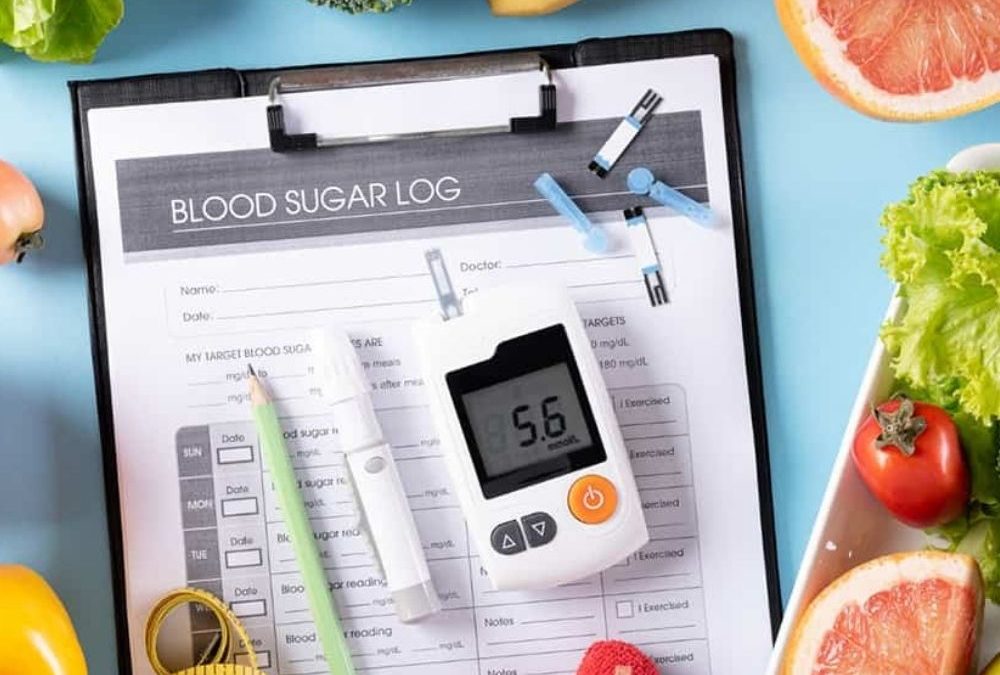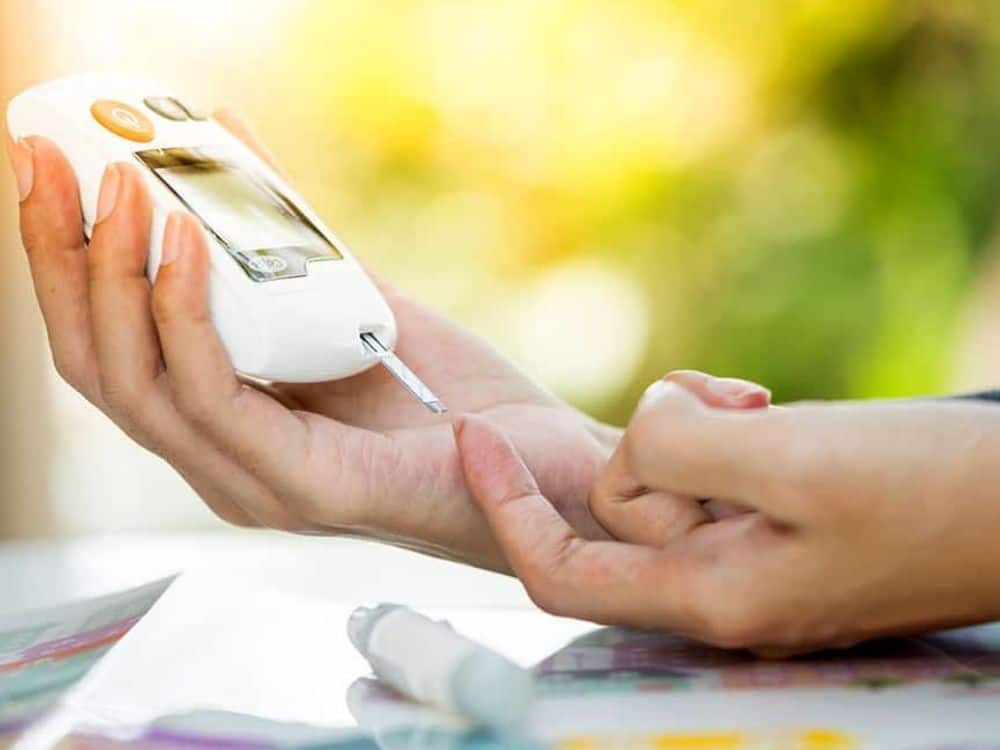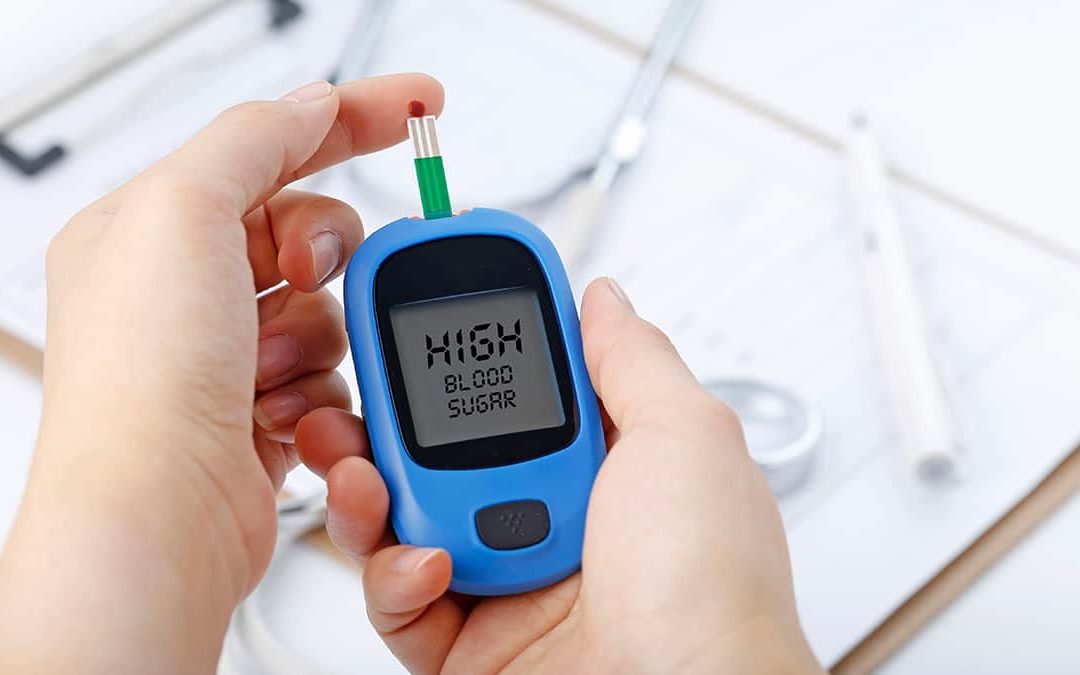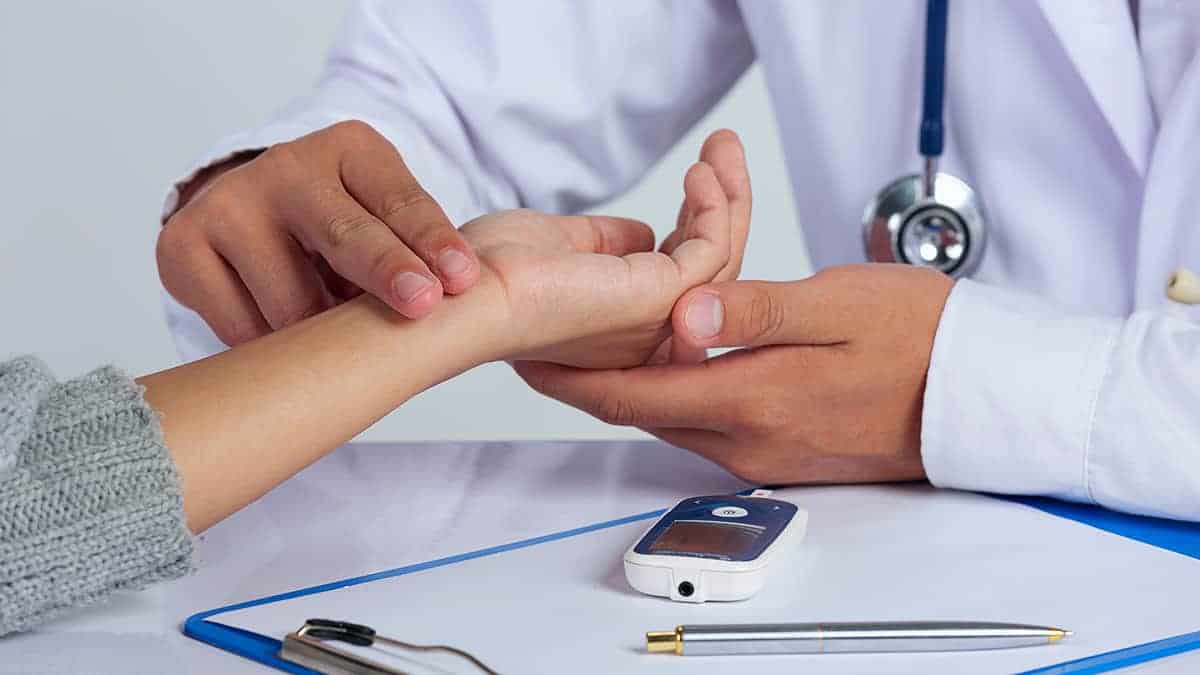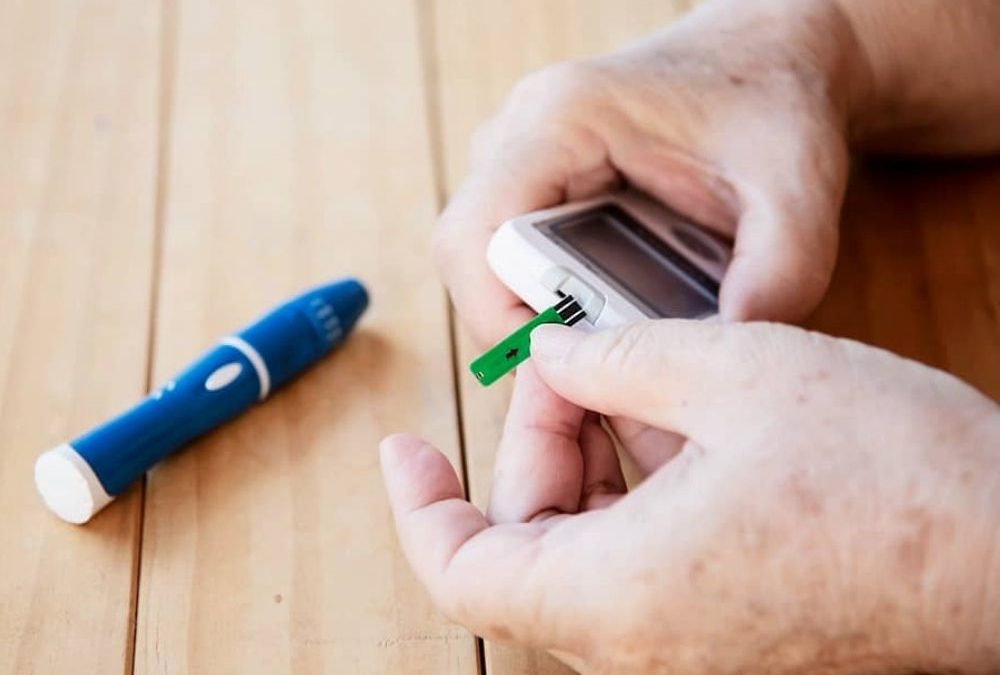
Diabetic Peripheral Neuropathy: Causes and Treatments
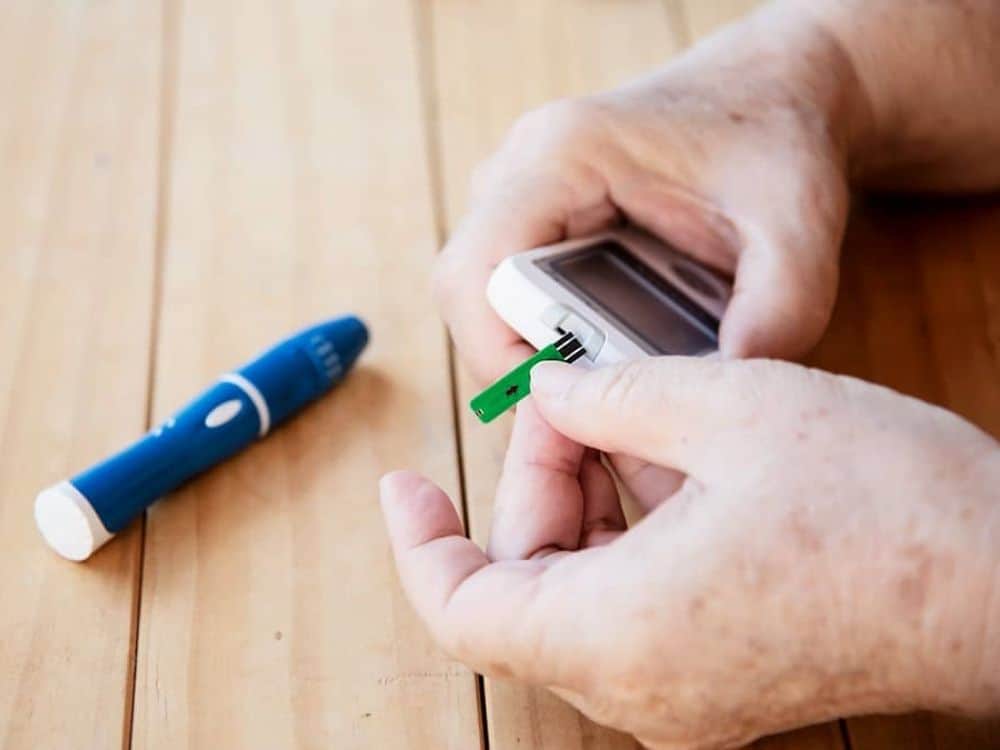
Diabetes — a condition that affects more than one in 10 Americans — often leads to additional health problems called complications. One of the most common diabetes complications is peripheral neuropathy. People with this condition have nerve damage that leads to pain, tingling, numbness, or weakness in the hands and feet. About one in two people with diabetes have peripheral neuropathy.
What Causes Neuropathy?
Neuropathy is a disease of the nerves. The body uses nerves to communicate with the rest of the body. Some nerves send signals from the brain to other tissues, and then other nerves send signals back to the brain. This process helps the brain learn about feelings and sensations, tell muscles when and how to move, and control different processes in the body such as breathing and the heartbeat.
In people with diabetes, the body has a hard time controlling levels of sugar and fat in the blood. High blood sugar levels and high fat levels can directly damage the nerves and also harm the blood vessels that keep the nerves healthy. In people with neuropathy, the brain has a harder time receiving information from and sending signals to certain parts of the body.
Neuropathy can also be caused by other conditions. Certain genetic disorders that are passed down within families can lead to nerve damage. Other disorders such as Guillain-Barre syndrome, inflammatory conditions, or cancer may also lead to neuropathy. Environmental or lifestyle-related causes of neuropathy can include heavy drinking, not getting enough of certain vitamins or minerals, exposure to toxic substances, or infections.
Types of Neuropathy
Damage to different types of nerves can lead to different forms of neuropathy. These include:
- Peripheral neuropathy: damage to the nerves in the feet or hands
- Autonomic neuropathy: damage to the nerves that control body functions like digestion, blood pressure, sweating, vision, urination, and body temperature
- Focal neuropathies: problems with a single nerve in the wrist, leg, head, or other location; includes carpal tunnel syndrome and eye problems
- Proximal neuropathy: damage that affects nerves in the thigh, hip, or buttock, usually just on one side of the body
People with diabetes can develop any of these neuropathies. Peripheral neuropathy is the most common type of nerve damage.
Peripheral Neuropathy Symptoms

These symptoms can develop and worsen slowly over time, or they can appear quickly. They may be more severe at night than they are during the day.
Long-Term Effects of Peripheral Neuropathy
Over time, people with diabetic peripheral neuropathy may experience worsening problems with their feet. When it is harder for the nerves in the feet to pick up on different sensations, a person may be less likely to notice pain or discomfort. Some people with diabetes develop sores, blisters, or infections on their feet, and may not notice these issues right away.
Diabetes interferes with the body’s healing processes by preventing enough blood from flowing to injured tissues. This means that it is harder for the body to repair even minor injuries. Some people with diabetes who develop severe foot problems may need to have a toe or foot amputated.
When feet and leg problems pile up, it may become harder to walk. Some of those with neuropathy may have a hard time balancing properly. This can lead to falls, which puts a person at risk for breaking bones. A person’s sense of movement may also be affected. Peripheral neuropathy may also cause a lot of pain, especially while walking.
Diabetics with peripheral neuropathy are likely to need more frequent visits to their doctor’s office or the hospital. They may also have a hard time working because of pain or difficulties getting around. All of these issues can in turn lead to mental health disorders such as anxiety or depression.
Diagnosing Peripheral Neuropathy

Blood tests are often a part of physical exams. These tests can identify various health problems that can cause neuropathy or be found in people with diabetes. Blood tests may be used to detect:
- Abnormal blood cell levels
- Thyroid disorders
- Kidney or liver problems
- Low levels of certain vitamins or minerals
During the physical exam, your doctor may perform several tests to see whether you are able to detect sensations with the nerves in your feet. One possible test is a monofilament test, in which the doctor touches your feet with a thin strand of nylon to see if you can feel it. Another test involves touching the feet with a tuning fork to see if the nerves in your feet can sense vibrations.
Doctors can directly measure how well your nerves and muscles are working with other tests. They may use nerve conduction velocity tests (NCV) to see how fast your nerves are able to send out signals. An electromyogram (EMG) measures electricity in the muscles, which helps doctors understand how fast your muscles respond to signals from the nerves.
Other tests may include checking your balance, seeing how well you walk, or testing the blood flow in your feet and toes.
Can Peripheral Neuropathy Be Prevented?
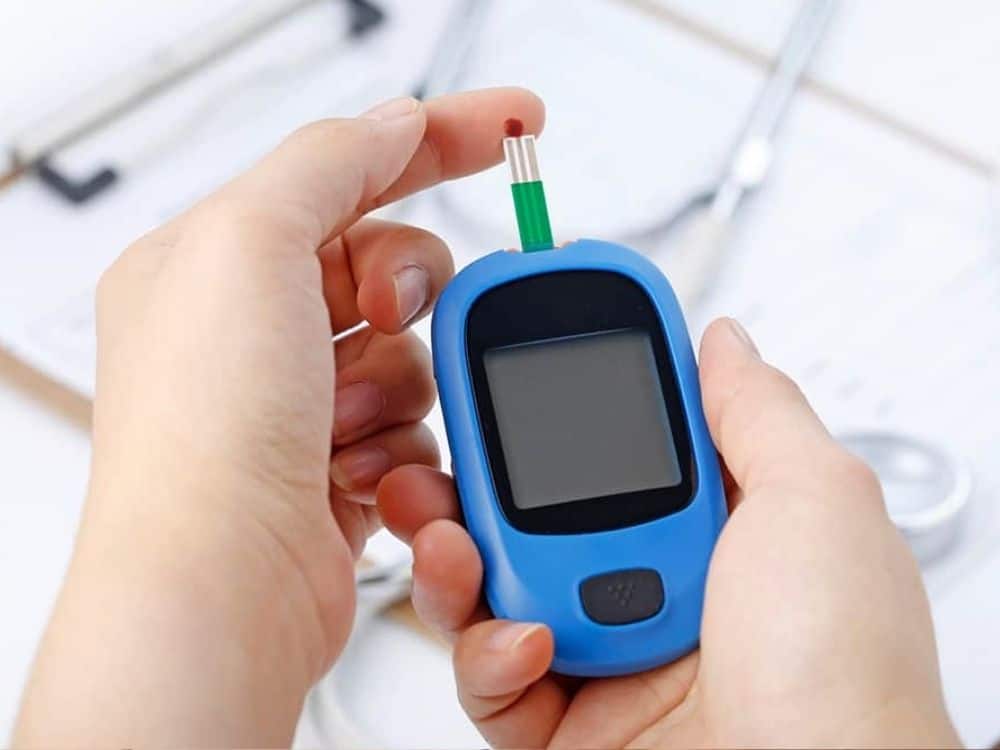
One of the most important ways people can reduce their risk of neuropathy is by treating their diabetes. Keeping blood sugar levels under control helps prevent the nerves from becoming damaged. Work with your doctor to develop a diabetes treatment plan that works for you.
Certain risk factors can increase a person’s chances of developing diabetic peripheral neuropathy. These include:
- Being older
- Having diabetes for a long period of time
- Having certain genes
- Smoking cigarettes
- Heavy drinking
- Being overweight
- Having other health problems such as high cholesterol levels or hypertension (high blood pressure)
- Being diagnosed with other conditions, including kidney disease
You can’t control some peripheral neuropathy risk factors like age or genetics. However, you can reduce your risk of nerve damage by focusing on certain lifestyle changes. Getting more exercise, eating a balanced diet (especially superfoods for diabetics), quitting smoking, and limiting how much you drink may help you avoid peripheral neuropathy. Additionally, use lifestyle changes or medication to prevent or treat high blood pressure or cholesterol levels.
Peripheral Neuropathy Treatments
If you are suffering from neuropathy pain, the first step is talking to your doctor, who can help you come up with a treatment plan. Make sure to ask about ways to both treat the neuropathy as well as keep your diabetes under control to prevent further damage.
Medications for Peripheral Neuropathy
Several different types of drugs can help manage peripheral neuropathy pain. However, traditional painkillers may not always be the best option. In particular, over-the-counter pain medications often do not work for neuropathic pain. These include non-steroidal anti-inflammatory drugs (NSAIDs) like ibuprofen as well as other drugs like acetaminophen.
Instead of utilizing traditional pain relievers, physicians sometimes recommend a medication for nerve pain that is in the “antidepressant” category of medicine because of the mechanism of action of this medication. These medications don’t heal nerve damage, but they can reduce neuropathy symptoms. Possible options may include:
- Pamelor (nortriptyline)
- Norpramin (desipramine)
- Tofranil (imipramine)
- Elavil (amitriptyline)
- Cymbalta (duloxetine)
- Effexor (venlafaxine)
- Paxil (paroxetine)
- Celexa (citalopram)
Anti-seizure medications may be another option for treating peripheral neuropathy pain. These drugs may include Neurontin (gabapentin) or Lyrica (pregabalin). Finally, topical medications that are applied directly to the skin may help. Your doctor may be able to prescribe a cream, spray, or patch that can numb pain.
These medications are not always equally effective for everyone. If you try one medication and it doesn’t seem to be helping, notify your doctor — another drug may work better for you.
When blood sugar levels rise, some of these medications may not work as well to treat neuropathy symptoms. Following your diabetes treatment plan is important when trying to treat nerve pain and treating the root cause of the problem is the goal in working to reduce neuropathy and neuropathic pain.
Supplements for Neuropathy
Several studies have found that alpha-lipoic acid can work well to treat neuropathy symptoms. This molecule is an antioxidant that is made by the body. Alpha-lipoic acid treatments are especially effective when they are given intravenously, through an IV needle that goes directly into a vein.
This antioxidant is also available as an over-the-counter supplement. In this form, alpha-lipoic acid may still help with symptoms, but it is not usually as effective as IV treatments.
Physical Therapy
People with diabetic neuropathy may want to consider going to physical therapy (PT). This type of treatment can help you build strength and improve your balance. During PT, you will work with a physical therapist to perform different exercises that specifically address your needs.
Caring For Your Feet

Taking good care of your feet can help prevent minor problems from getting worse. Doctors recommend that people with peripheral neuropathy check their feet every day. If you notice a small issue right away and seek treatment, you have a better chance of healing and avoiding infection. Try looking for:
- Cuts, sores, or areas where the skin is broken
- Blisters
- Calluses (areas of thicker skin)
- Plantar warts (a hard, rough growth on the surface of the skin)
- Rashes such as athlete’s foot
- Ingrown toenails (a condition in which the edge of a toenail grows into the flesh, or the surrounding skin starts growing over the nail)
Try to get into the habit of washing your feet each day. Make sure the water that you use isn’t too hot. If you have a hard time sensing temperature, use a thermometer to measure the water before washing. Don’t use water above 95 degrees Fahrenheit (35 degrees Celsius). Once you are done, dry your feet thoroughly. Dust your feet with baby powder or cornstarch to help keep your skin dry.
Another way to protect your feet is always wearing socks and shoes. Socks can help keep your feet dry, while shoes protect your feet from injury. Make sure your shoes aren’t too tight, and break in new shoes by wearing them for short periods of time when you first get them. Before putting on your shoes, check that there are no small stones or other objects inside that could hurt your feet.
Certain types of footwear can also help prevent ulcers. Ask your doctor about whether insoles, shoes, or orthotics may help support your feet.
A yearly foot exam is also a good idea for people with peripheral neuropathy. During this visit, your doctor can make sure your feet are in good health. More frequent exams may be needed for people who have current or past foot problems. You may be able to go to your primary care provider for this exam, or your doctor may recommend that you see a podiatrist (a doctor who specializes in treating feet).
Controlling Diabetes
Managing your blood sugar levels is a very important part of treating and controlling nerve damage. Make sure to check your blood sugar regularly. Choose nutritious foods that won’t lead to large blood sugar spikes, and get regular physical activity. Additionally, use any medications as directed by your doctor.
If you don’t think that you are controlling your blood sugar levels well enough, talk to your health care team. Your doctor may be able to help you better understand which treatments or lifestyle changes will help prevent complications from diabetes. A certified nutritionist or registered dietician can also help you come up with a better eating plan.
Conclusion
It is important to take peripheral neuropathy seriously, since symptoms can get worse and may cause additional problems over time. Effectively treating your diabetes can help you avoid nerve damage or prevent existing symptoms from worsening. Medications can help relieve symptoms of peripheral neuropathy, including pain. Follow the directions of your health care team when it comes to making necessary lifestyle changes and taking care of your feet. If you are having nerve pain and would like to discuss it further, please make an appointment.

